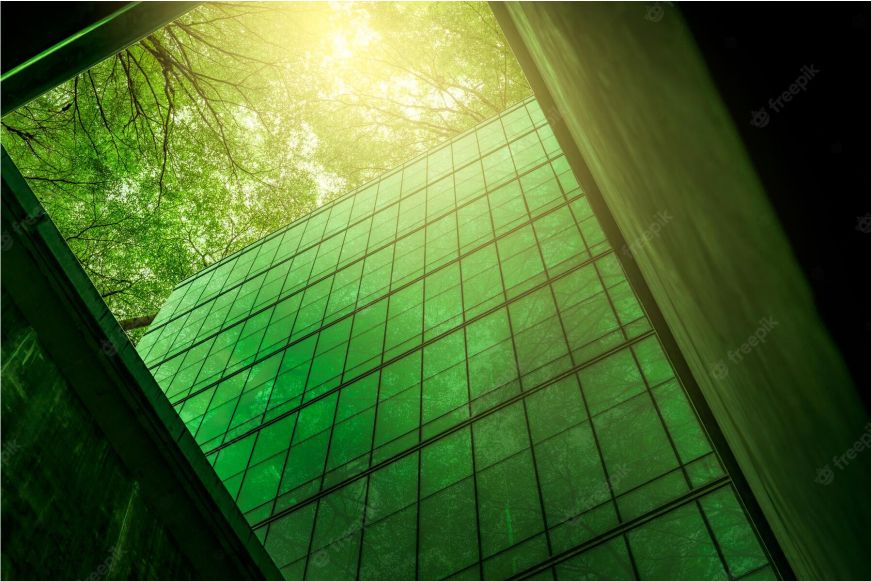Sustainability & Glass Installation
Sustainability & Glass Installation
As a glass installation company, we often get asked about the sustainability of our products and practices. In this article, we’ll talk about what glass is, some of its key benefits, and how our company is working to make sure glass installation is as sustainable as possible. Glass has been used in buildings for centuries, and its popularity is only increasing. Owing to its aesthetic properties, versatility, and durability, glass has become a material of choice for architects and builders worldwide.
There are many reasons why glass is a sustainable material. First, glass is made from natural ingredients-sand, soda ash, and limestone-which are plentiful resources. Second, glass is completely recyclable. In fact, recycled glass can be used indefinitely without losing its quality or performance. Our company is committed to sustainable glass installation practices. We use recycled glass whenever possible, and we take care to minimize waste during the installation process. We are also continually exploring new ways to use glass in order to reduce our environmental impact.
What is sustainability and glass installation?
What is sustainability? In its simplest form, sustainability is the idea that we should be living in a way that meets our current needs without compromising the ability of future generations to meet their own needs. This means living within our planet’s finite resources, using renewable energy sources, recycling and waste reduction, and creating a healthy built environment. Sustainability also has an economic dimension. A sustainable economy is one that provides good jobs and fair wages, while also protecting the environment. It is one that is inclusive and works for the benefit of all people, not just those at the top. The glass installation process is a complicated and time-consuming undertaking that must be done with great care. As with any building project, there are a number of factors that must be considered before work can begin.
The type of glass, the size and shape of the glass, the climate, the purpose of the glass, and the budget are all important considerations. The glass installation process begins with a site survey to determine the best location for the glass. The next step is to select the glass. There are many types of glass available, and the type of glass that is best for a particular project will depend on its purpose. For example, solar glass is designed to absorb and reflect heat, while laminated glass is designed to resist impact. Once the glass has been selected, the next step is to prepare the site. This includes removing any obstacles that could impede the installation process, such as trees, shrubs, or rocks. The area must also be level and free of debris. Once the site is prepared, the glass installation process can begin. The first step is to create the opening for the glass.
This is done by cutting a hole in the wall or ceiling. The size and shape of the opening will be determined by the type and size of the glass that has been selected. The next step is to install the frame. The frame must be level and square in order to properly support the glass. Depending on the type of frame being used, it may be necessary to install anchor bolts or other supports. Once the frame is in place, the glass can be installed. The glass is placed in the frame and secured with caulk or another type of sealant. The glass should be sealed around the perimeter to prevent air and moisture from entering the building. After the glass has been installed, the final step is to clean up the site. This includes removing any leftover materials, such as sawdust or scraps of wood. The site should be left clean and free of any hazards.
What UK regulations do we meet as a supplier and manufacturer?
As a supplier and manufacturer of glass products, we at Most importantly, we are committed to meeting all UK regulations related to sustainability and glass installation. This includes complying with the WEEE directive and the recent Packaging and Packaging Waste Directive. We also adhere to all relevant British Standards related to our industry. Most importantly, we are committed to meeting all UK regulations related to sustainability and glass installation. This includes complying with the WEEE directive and the recent Packaging and Packaging Waste Directive.
We also adhere to all relevant British Standards related to our industry. In terms of sustainability, we are constantly looking for ways to reduce our environmental impact. We have implemented a number of initiatives in recent years, such as investing in solar panels and LED lighting. We are also committed to recycling as much of our waste as possible. As a manufacturer of glass products, we are also aware of the potential danger posed by our products. We therefore take all necessary precautions to ensure that our products are safe and compliant with all relevant safety standards. We carry out regular testing and checks on our products to ensure that they meet the highest standards. We are proud of our commitment to meeting all UK regulations related to sustainability and glass installation. We believe that it is our responsibility to do our part in protecting the environment and ensuring the safety of our products. We will continue to invest in sustainable practices and improvements in safety in order to maintain our high standards.
How effective glass and glazing can save energy in the UK?
Glass is one of the most common construction materials in the world. It is used in a variety of applications, including windows, doors, skylights, and walls. Glass is an excellent insulator and can help to regulate the temperature inside a building, making it more comfortable for occupants and saving energy. In the United Kingdom, glass installation is regulated by the Building Regulations. These regulations set out minimum standards for the thermal performance of windows and doors. The thermal performance of a window or door is measured by its U-value. The U-value is a measure of the heat loss through a building element. The lower the U-value, the better the thermal performance of the window or door. There are a number of ways to improve the thermal performance of glass.
One way is to use glazing with a low U-value. Another way is to use insulated glass units (IGUs). IGUs are made up of two or more panes of glass separated by an air or gas-filled space. The space between the panes of glass acts as an insulating barrier, reducing heat loss. In the UK, the Building Regulations require that all new buildings meet or exceed a certain level of energy efficiency. One way to meet these regulations is to use glass that has a low U-value. Low-U glass is available in a variety of forms, including double-glazed and triple-glazed units, and can be used in a variety of applications, including windows, doors, and skylights. Low-U glass can make a significant difference to the energy efficiency of a building. In fact, the use of low-U glass can reduce the energy consumption of a building by up to 30%. This reduction in energy consumption can help to save money on energy bills and also help to reduce the carbon footprint of a building. The use of low-U glass is just one way to improve the energy efficiency of a building. Other ways include the use of insulation, draught-proofing, and renewable energy technologies. By using a combination of these measures, it is possible to significantly reduce the energy consumption of a building and make it more sustainable.
How much can you save on your UK Bills per year?
Depending on the type of glass installed in your home, you could save a significant amount on your UK bills each year. For example, by installing Energy-efficient glazing, you could save up to £140 a year on your energy bills. Other ways of saving money on your bills include: -Making sure your home is well insulated. This could save you up to £270 a year on your energy bills. -Draft proofing your home. This could save you up to £55 a year on your energy bills. -Switching to a cheaper energy supplier. This could save you up to £300 a year on your energy bills. -Using energy-efficient light bulbs. This could save you up to £75 a year on your energy bills. -Installing solar panels. This could save you up to £600 a year on your energy bills. -Using a clothes drying rack instead of a tumble dryer. This could save you up to £100 a year on your energy bills. So, as you can see, there are many ways to save money on your UK bills each year, depending on the type of glass installed in your home. By taking some simple steps, you could see a significant reduction in your energy bills.
Why does Rom Valley Glass & Glazing meet UK Energy saving regulations?
As a full-service glass company, Rom Valley Glass & Glazing offers a wide variety of services to meet the unique needs of their customers. One important service they provide is helping their customers save money and energy by ensuring their glass installation meets UK energy saving regulations. Since all glazing has the potential to lose heat, it’s important to make sure that any glass installed in a building is properly insulated. This not only helps to keep the building comfortable and energy-efficient, but also helps to reduce the carbon footprint.
Rom Valley Glass & Glazing takes a holistic approach to sustainability, which includes ensuring that their glass installations meet UK energy saving regulations. By working with their customers to ensure that their glass is properly insulated, they are helping to create a more sustainable future for everyone. The need for sustainability has led to the popularity of glass installation. Glass is a durable and long-lasting material that is also recyclable. It is an ideal material for sustainable construction.


